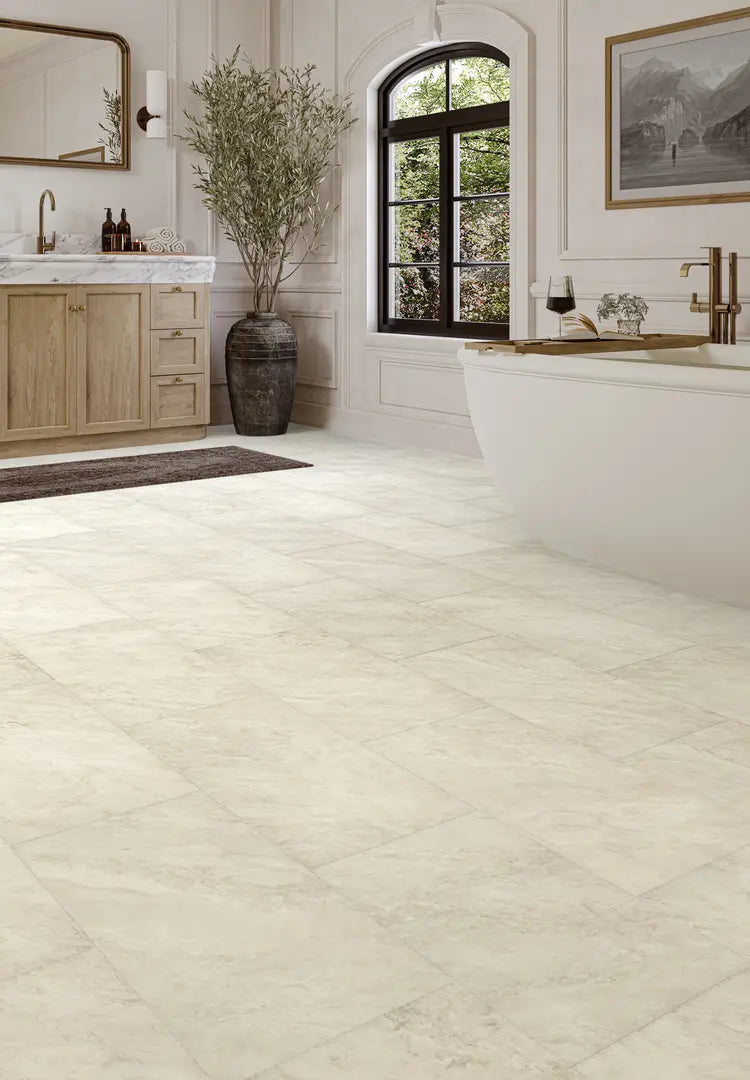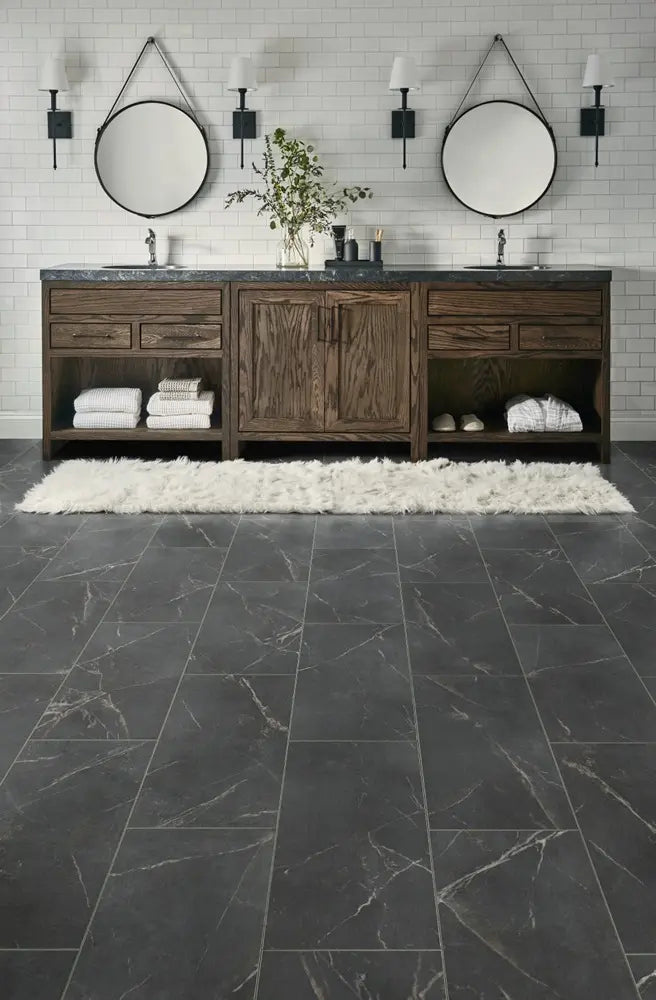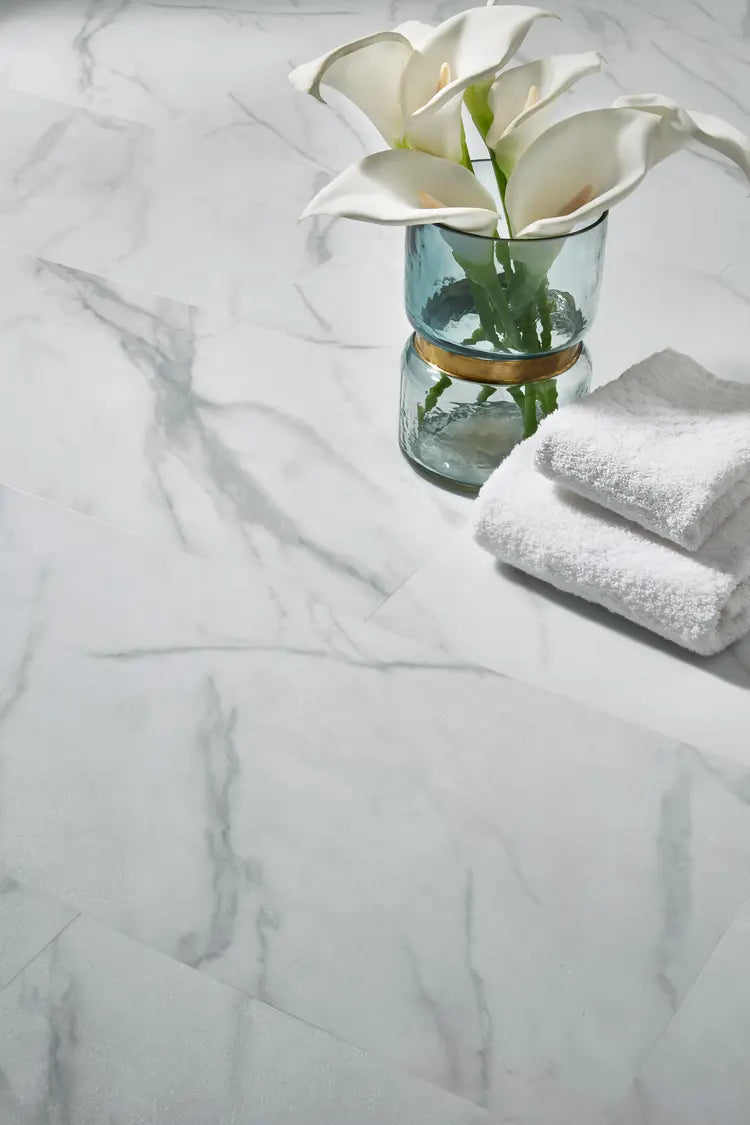LVT
Where does LVT Originate From?
Luxury Vinyl Tile (LVT) originated as an evolution of vinyl flooring, which gained popularity in the mid-20th century. Vinyl flooring itself was developed as a durable and cost-effective alternative to linoleum after World War II. LVT, specifically, was introduced in the 1970s as a way to improve the realism of vinyl flooring by mimicking natural materials like wood and stone.
Its popularity surged in the 2000s with advancements in design and construction, making it a versatile and stylish choice for both residential and commercial spaces. It's a popular choice for those who want a sleek tile look, without the hassle of grout work.

Comfort
LVT flooring is known for its comfort due to several factors. It provides a softer surface compared to materials like stone or ceramic tiles, which makes it more comfortable to walk on and can reduce foot fatigue. It also retains warmth better, making it feel cozier underfoot, especially in colder weather. Additionally, LVT has sound-absorbing properties that help dampen household noises, and some products come with extra underlayment for added cushioning and noise reduction. Its slight flexibility can be gentler on the joints, making it a good option for those with joint pain or mobility issues. Overall, LVT offers a comfortable and practical flooring solution for various areas of the home.

Water Resistance
LVT (Luxury Vinyl Tile) flooring is highly water-resistant due to its multi-layered PVC vinyl construction, which inherently repels moisture. The top protective wear layer prevents water penetration, and the tightly sealed edges stop water from seeping through seams. Additionally, the backing layer adds stability and moisture resistance. Installation methods like floating floor and glue-down with waterproof adhesive further enhance its water-resistant properties. This makes LVT an ideal choice for areas prone to spills and moisture, ensuring durability and protection against mold and mildew.

Affordability
LVT (Luxury Vinyl Tile) flooring is affordable because it offers the aesthetic appeal of high-end materials like hardwood or stone without the hefty price tag. The production process and materials used in LVT are cost-effective, allowing it to be sold at a lower price point. Additionally, LVT is durable and low-maintenance, reducing long-term costs associated with repairs and upkeep. Its ease of installation, especially with DIY-friendly methods like click-lock systems, can also save on professional installation fees. Overall, LVT provides a budget-friendly flooring option that doesn't compromise on style or performance.

